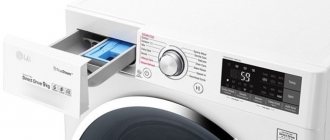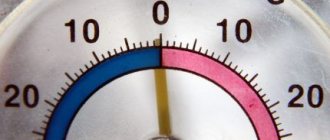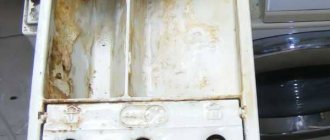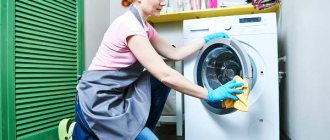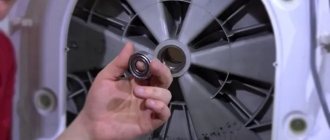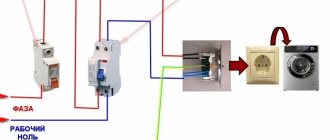A fairly common problem for private, and especially country houses, is the installation of a washing machine. The lack of a normal water supply, and therefore the possibility of connecting household appliances to it, would seem to negate the very possibility of purchasing an automatic machine. It was like that before. Until recently, running water was indeed a prerequisite for appliances of this class, but now, the market is able to provide a specially designed automatic washing machine suitable for use in rural areas.
How to organize laundry in the village?
To take advantage of automatic washing machines (WMA), you must have the appropriate amenities of civilization in your home:
- electricity;
- water supply with good pressure;
- sewer drain.
Everything is fine with the electricity supply in the villages, sewerage can be installed - not a big problem, but as for the water supply, everything is more complicated. Most villages do not have a water supply network, but even if they do, the pressure in it is not enough for the normal functioning of the SMA. The issue of organizing laundry at a dacha or in a country house has several solutions, let’s try to find the best.
Washing machines for the village
For rural areas, washing machines can be used:
- . If you have a house without running water, a semi-automatic machine is a good solution. Liquid is poured into the tank from above - with a bucket or hose from some large container. The disadvantage of such machines is the need for human control. You need to add water, drain, rinse, and wring out.
- . Small machines for the dacha - “Slavda”, “Fairy”, “Rainbow” and the like, are suitable for those who do a little laundry and have problems with water. These washing machines allow you to wash things without connecting to a water supply, and they use very little water. The capabilities of these machines are limited; their load is only 2–3 kg.
- SMA. Regular or with tank. True, in the first case you will have to tinker with organizing the water supply. For houses without water supply, the second option is more suitable.
Methods for connecting and draining water
In the absence of running water
In the absence of a central water supply, water is taken from an attached tank. To do this, use large containers made of durable materials.
Modern automatic washing machines use pressurized water. The required water pressure is ensured by installing tanks above the level of the inlet valve at a height of at least 10 meters.
If it is not possible to install such a tank, use another method. To do this, the container is placed on the same level as the machine.
Water is drawn in using an additional water pump. The inlet valve of the washing machine is connected via a hose to the outlet socket of the pump.
The inlet socket of the pump is inserted into a hole previously made in the wall of the tank. The joining area is carefully processed and sealed.
In the absence of sewerage
In the absence of an organized drainage system, a cesspool is installed to drain used water. The minimum depth of the drainage pit should be at least 1.2-1.5 m.
The walls of the pit must first be strengthened to protect against collapse. The surface of the outlet pipe should be pre-cleaned and treated with a primer. To protect against freezing, the pipe must be carefully insulated with mineral wool.
To protect plants from damage by chemical reagents, the pipe outlet should not be located in close proximity to country plantings.
All of the above recommendations will allow you to perform washing with maximum efficiency without connecting to water supply and sewerage.
Automatic washing machines in the village
If the village has running water, then installing an automatic washing machine becomes quite possible. The main thing is that the pressure meets the technical requirements for the operation of the device. Usually it is possible to use the most undemanding and simple devices, designed for 3.5 kg and with a minimum speed of 600–800 rpm.
In principle, the lack of water supply is not an obstacle to the use of automatic washing machines. To operate correctly, machines without a tank require a water supply, and how it is organized is absolutely unimportant to the machine. If there is a well with a submersible pump, then water supply can be organized. The most difficult thing about connecting the SMA to water is ensuring the required pressure.
What if there is no running water?
The washing device is connected to a well, well or other autonomous source. Water supply is carried out by means of a pump. In principle, an ordinary container of water can play the role of a source.
- You need a 100 liter barrel and a stool 0.5 m high.
- A hole with a diameter of 5 cm is drilled in the stool.
- A hole is also drilled in the bottom of the barrel. Its diameter must match the external thread of the ball valve.
- The valve fitting is attached to the bottom of the barrel and tightened with a lock nut placed on the thread from the inside.
- The barrel is placed on a stool, the valve is passed into a hole drilled in the stool.
- Check the tightness of the barrel. If there is a leak, silicone is added under the locknut.
- They take a pump - the most ordinary one - and solder 1.5 m long wires to the power terminals.
- They open the housing, study the electrical circuits, and find a bypass valve that controls the filling of liquid.
- The SMA is usually connected to the water supply through a normally closed solenoid valve, which does not allow liquid to pass through until electricity is applied to the terminals. The pump contacts are connected to the wires leading to the valve - the shut-off device turns into a control relay. Then solder the wires from the pump to the valve terminals. The housing is closed and plugged into the network.
You won’t have to do any of this if you buy an SMA that already has a “barrel” attached to it. Such models are present in small quantities on the Russian market.
SMA with tank
The SMA with an additional water tank works exactly the same as conventional models. The tank attached to the body is the only difference between the “village” cars. However, their use is not limited to the private sector; such devices are often installed on the top floors of high-rise buildings where there is a lack of pressure.
The appearance and internal design of models with a reservoir are the same as their conventional counterparts. If you unhook the tank, the washing machine will take on the most ordinary appearance. It is mounted on the side or on the back wall, its capacity is 65–100 liters. The water supply is enough for several washes.
- Loading is front only.
- The tank volume is enough, depending on the selected mode, for 1–2 cycles.
- Liquid is supplied to the reservoir automatically or manually.
- The device collects liquid in the same way as devices connected to a centralized water supply do.
- If there is not enough water to continue the cycle, the device signals this - the user adds water, and this can be done during the cycle.
- Draining is done through the drain hose. Where to connect it is up to the user. You can drain the water into the sewer network, and if there is none, into any container of suitable volume.
How to start?
To start an SMA that works without connecting to a water supply, you need to perform a number of steps:
- Make sure the SMA is on a level surface.
- Check that the outlet is working properly and connect the device to it.
- Make the first run idle - without underwear.
- Add detergent, load laundry and add water. It doesn’t matter how you fill the container - manually or from the water supply. If there is a built-in pump, the device will take the required volume of liquid - 90–100 liters. Now you can turn on the device.
Advantages and disadvantages
Advantages of SMA with reservoirs:
- Allows you to do laundry “city style” in the village. There is no need to manually fill and drain water, wring out laundry by hand or transfer it to a centrifuge.
- No centralized water supply is required.
- You can wash clothes if there are any problems with water, which is why these machines can also be installed in city apartments - in case of water shortages.
- Economical consumption of electricity and water. The user has the ability to control the flow of water. If the supplied quantity is not enough, the device will signal that an additional portion is required.
- Many programs and modes.
- Large dimensions. This is especially true for small apartments and small private houses - a lot of space needs to be allocated for the device.
- There are models in which the tank is not detachable. Even if the owner no longer needs it, it can no longer be removed. This must be taken into account when installing the machine, or choose a universal model that can work both with a tank and with water supply.
- You have to control the amount of liquid in the tank and add it as needed.
What technologies?
Gorenje with a tank, like other machines, has enough technical capabilities for high-quality washing. Along with the usual technical solutions, they also have features that set them apart from their competitors.
Technologies and technical solutions used at Gorenje:
- The surface of the drum is ridged. With the help of ridges, liquid is captured from the bottom. This solution, the “Shower System,” improves the quality of washing.
- UseLogic - ensures minimal water consumption. Sensors monitor the purity of the water, determining whether additional rinsing is needed. For each cycle, the optimal volume of liquid is calculated, taking into account the weight of the laundry loaded into the drum.
- NickelHeater is a durable heating element. Has a smooth nickel-plated surface. Scale forms on it less actively.
- Balancing control system - for uniform distribution of laundry throughout the drum. As soon as an imbalance appears, the motor stops and then begins to rotate in the opposite direction.
How to choose an SMA with a tank?
When choosing a suitable model, pay attention to the following characteristics:
- Dimensions. For a spacious room, you can take the option with a side-mounted container. If there is a shortage of space, modifications in which additional capacity is located at the rear are more suitable.
- Volume. From 50 to 100 l. The larger the container, the better - you will have to fill it less often.
- Energy class. The optimal value is class A and higher.
- Water consumption. 9.2–9.3 thousand liters per year.
- Presence of a fill valve. This element is necessary to prevent overflow - but not all models have it.
- Spin speed. Up to 1000 rpm. The best option is a modification with a choice of spin speed.
- Loading. From 6 to 7 kg.
Methods for connecting and draining water
In the absence of running water
In the absence of a central water supply, water is taken from an attached tank. To do this, use large containers made of durable materials.
Modern automatic washing machines use pressurized water. The required water pressure is ensured by installing tanks above the level of the inlet valve at a height of at least 10 meters.
If it is not possible to install such a tank, use another method. To do this, the container is placed on the same level as the machine.
Water is drawn in using an additional water pump. The inlet valve of the washing machine is connected via a hose to the outlet socket of the pump.
The inlet socket of the pump is inserted into a hole previously made in the wall of the tank. The joining area is carefully processed and sealed.
In the absence of sewerage
In the absence of an organized drainage system, a cesspool is installed to drain used water. The minimum depth of the drainage pit should be at least 1.2-1.5 m.
The walls of the pit must first be strengthened to protect against collapse. The surface of the outlet pipe should be pre-cleaned and treated with a primer. To protect against freezing, the pipe must be carefully insulated with mineral wool.
To protect plants from damage by chemical reagents, the pipe outlet should not be located in close proximity to country plantings.
All of the above recommendations will allow you to perform washing with maximum efficiency without connecting to water supply and sewerage.
https://youtube.com/watch?v=vvUBdl-BbVw
Review of models and consumer reviews
On the domestic market, SMA with tanks is offered by the Gorenje brand. Let's take a closer look at the options presented to our customers.
Gorenje WP 7Y2/RV – with water tank
A machine from a Slovenian brand at a competitive price and with good parameters:
- Capacity: 7 kg.
- Spin speed: up to 800 rpm.
- Number of programs: 16 pcs. (including Delicate, Economy, Mixed fabrics, washing in large volumes of water and others).
- Energy efficiency class: A++.
- Washing/spin classes: A/D.
- Safety: protection against leaks, child lock, imbalance and foam level control.
- Dimensions (WxDxH): 60x55x85 cm.
- Noise level (washing/spin) - 57/73 dB.
- Additionally: anti-allergy, self-cleaning.
- Large set of programs.
- All types of protection.
- Electronic convenient control.
- Ability to work without running water.
- Low spin class - the laundry will remain partially wet.
On a note! Perhaps the manufacturers did not specifically focus on spinning, because the machine is designed primarily for rural areas, where clothes are often dried in the fresh air, and residual moisture does not play a special role.
W 64Z02/SRIV - narrow
This narrow machine, like the previous model, has a removable lid for embedding. But her tank is mounted not on the side, but on the back. The control panel has a digital display and a rotary knob for switching modes. This version is suitable for families with children - appropriate locking is provided. There is a timer that allows you to delay the start for up to 24 hours. The hatch can open 180 degrees - this simplifies the loading of laundry. Reservoir - 65 l.
- Capacity: 6 kg.
- Drying: no.
- Water consumption: 51 l per cycle.
- Spin speed: 1000 rpm.
- Number of programs: 23 pcs. (including washing delicate fabrics, sportswear, quick, pre-wash).
- Energy efficiency class: A++.
- Washing/spin classes: A/C.
- Safety: partial protection against leaks, child protection, imbalance and foam level control.
- Noise level (wash/spin): 56/68 dB.
- Dimensions (WxDxH): 60x44x85 cm.
- Weight: 69 kg.
- Removes stains efficiently.
- When connected to a water supply, it operates at low pressure. The user connected the container to the village water supply with a pressure of 2 liters per minute. The container is slowly filled through a hose, and then the washer pumps as much as needed into the drum.
- There is control of the liquid level in the container.
- Compared to the side mounting of the tank, the dimensions are more convenient.
- There is a quick wash for 17 minutes.
- There is an “anti-allergy” mode.
- Quiet operation.
- Lots of unnecessary programs. Users note that they use 4–5 pieces, no more.
Expert opinion. You won't please your users. If there were 5 programs, they would definitely write that there are too few. So this is not a disadvantage.
One user notes that after three years of operation the pump broke. The repairman who carried out the repair said that he would work for the same amount of time. For modern technology, 6–7 years of service is not so bad. This model has become a real gift for many rural residents, especially pensioners - they can finally wash all the linen in the house with high quality without making any effort.
This relatively inexpensive model is designed for small washes - the drum load is only 6 kg. Compared to the previous version, the W 64Z02/SRIV has very limited capabilities. The container will have to be filled more often, and the laundry will have to be loaded less often. But there is a display and a child lock, which is not observed in the previous modification.
LG F-2J6WS0W – with surge protection
The model is equipped with protection against power surges - what you need if your village or dacha cooperative has problems with this. The only disadvantage of this functionality is that when there is a power surge, the machine will stop working and wait for the voltage in the network to normalize. But its electronics will be reliably protected from breakdowns.
- Capacity: 6.5 kg.
- Spin speed: up to 1200 rpm.
- Number of programs: 14 pcs. (including Delicates, Economy, Nightwear, Blacks, Mixed fabrics and others).
- Energy efficiency class: A++.
- Washing/spin classes: A/B.
- Safety: protection against leaks, child lock, imbalance and foam level control.
- Dimensions (WxDxH): 60x45x85 cm.
- Noise level (washing/spin) - 56/74 dB.
- Additionally: hypoallergenic washing, possibility of reloading laundry.
- Compact and roomy.
- The weight of 63 kg does not allow the machine to “run away” when spinning at high speeds.
- Steam wash.
- Stylish design.
- Large hatch.
- Quiet operation.
- It is possible to create your own program (but it is not saved).
- Collapsible (repairable) tank.
- Adjusting the temperature from 20 to 95 degrees, spin from 400 to 1200.
- Supplied with a hose and a coarse filter.
- NFC for installing additional programs.
- Vibrates during spin cycle.
- Russian-assembled models are not of the highest quality.
- Water remains in the gum.
- There is no backlighting of the touch keys, they are difficult to read.
- The instructions are for the entire line, not this individual model.
- NFC only works at close range.
Installation of a compact blower
The easiest way to connect a washing machine is with a small-sized and inexpensive pressure pump. In this case, a simple scheme is used. It consists of three elements: a water tank – a pump – a washing machine hose.
You need to purchase the pumping device itself (it costs no more than 1 thousand rubles), adapters for it, two meters of cable (with two cores) and silicone-based sealant (with its help you will fix the adapters). It is advisable to buy a pump of the same brand as your automatic washing machine. In this case they will be completely compatible.
We recommend: Installing a gas boiler in a private house requirements: sequence of work on installing gas boilers
Pumping device for connecting an automatic washing machine
Important nuance! The pumping device should be taken with a cover (assembled). If you are offered only an impeller and a motor, refuse such a purchase. Most modern washing machines have a water supply hose with a 3/4 inch thread. The pump does not have such a connection. Therefore, adapters need to be purchased specifically for 3/4 inches. You can stock up on sealant at any auto store. Buy the silicone compound that you like.
Next, do everything according to the given scheme:
Make a hole in the water container using a conventional electric drill, and install adapters into it. Be sure to treat the entry point of the adapters with sealant. Such a connection will take about 22–24 hours to dry. Use coarse sandpaper to clean the tubes on the purchased pump that are necessary for connecting the adapters. Lubricate the latter with sealant and pull them onto the tubes. Solder (or connect with terminals) the wires going to the pump contacts. This area should be additionally protected with special tubes (they are called heat-shrinkable). Wait for the silicone adhesive to dry, and then connect the pump to the washer.
Now feel free to start the washing machine (don’t forget to fill the container with water). When the unit needs water, you will need to connect the installed pump to a 220-volt outlet. That's all. Use your washing assistant in a country house where there is no running water.
conclusions
- The best solution to the problem of washing in the village is the Gorenye model with tanks.
- An additional tank can be filled with water - well, rain, etc.
- Lack of running water is not a reason to refuse SMA.
- Thanks to washing machines with additional capacity, rural users are freed from unnecessary fuss with laundry.
The problem of laundry in the village is best solved by SMA from Gorenje. Today this is the simplest and most effective way to wash clothes efficiently. The process differs in only one stage - collecting water into the tank.
Are all cars heated?
The usual function in automatic machines is not always available in a simple design. Some manufacturers have equipped the device with the technical capabilities to heat water at the initial stage of washing. In the future, the device simply maintains the temperature.
Factors on which the price depends:
- Tank size and volume. With a larger tank capacity the price is higher.
- Well-known and reliable manufacturer. They often overpay for the brand.
- Control type. Models come with activator control and semi-automatic.
- Spin and water heating function.
- Washing class and additional functions.
- Power consumption.
- Additional water tank and other accessories.
What is the difference between regular automatic cars and cars with a tank?
A washing machine with a water tank is a unique technique, the design of which differs little from an automatic washing machine. The device is equipped with a dashboard and washing programs. The main difference is that it comes with a water tank , which is attached or built into the body. Such models are mainly used where there are interruptions in water supply. An additional tank is considered the only source of water for them, which ensures uninterrupted operation by completely replacing the plumbing system.
If the model has a fill valve, it is recommended to attach it vertically to the tank. After this, connect a special hose. An important point when installing such a washing machine is organizing the drainage of waste water . If there is no sewer, you can simply extend the drain hose and lead it directly to the drain hole. Before first use, be sure to check the tightness of all connections and make sure that the tank does not leak.
Advantages of models with a reservoir:
The washing process has been simplified, if previously it was done manually.
There is no need for a water supply system or connection to a central water supply.
Washing in any conditions, even if there is reduced water pressure or there are interruptions in water supply.
A variety of modes and washing programs.
Saving water and electricity. You can pour water at your discretion. If it is completely insufficient, the machine will notify you with a signal. The models have a high energy efficiency class, so they consume little energy.
Disadvantages of a machine with a tank:
Large sizes. Such devices take up more space compared to conventional models. It is impossible to disconnect the tank, even if it is not necessary for one reason or another.
Constant control of the amount of water in the tank. Additional filling is carried out independently.
Advantages and disadvantages
A washing machine for a dacha without running water has a number of undoubted advantages, which makes many owners of country houses choose it, and also has several disadvantages:
It does not require connection to a central water supply and sewerage system.
This machine is compact and can be easily transported from place to place. It can be stored in the pantry and taken out into the bath while washing. This is especially true for owners of small premises.
A semi-automatic washing machine is ideal for those who often change their place of residence, because transporting it in a passenger car will not be difficult.
Activator washing machines are not demanding on water quality. In automatic washing machines, scale forms much faster due to the presence of a heating element in its design.
Possibility of using any detergent, including soap shavings or shampoo.
Simplicity of design ensures reliable operation. These machines rarely break down. Even if a breakdown occurs, service specialists will be able to repair any model of semi-automatic washing machine.
The need for human participation in the washing process. Physical participation or observation is required at all stages of the cycle. First you need to draw water, then connect the drain hose. If the machine has two tanks, then for spinning you need to transfer the laundry from the tank to the drum.
The water does not heat up.
Lower quality of washing compared to automatic washing machines.
High noise level, especially during spinning.
The need to manually rinse washed laundry.
Types of washing machines with a tank
Washing machines with an external tank are classified according to:
- I think:
- automatic;
- semi-automatic;
- Constructions:
- drums;
- activator;
- Size:
- narrow - depth up to 44 cm and loading up to 6 kg of things;
- full-sized - up to 60 cm deep and loading up to 7 kg of laundry.
- Tank placement:
- on the back wall;
- on the side of the body.
- Loading:
- horizontal;
- vertical.
Tanks can be attached or built-in. They differ in material of manufacture and capacity. There are models of washing machines with stainless steel tanks or plastic containers . The last option is easier and cheaper. It reduces the weight of the structure and dampens vibration. A stainless steel tank costs more and lasts longer.
Models of devices with a tank have a variety of functionality. There are from 1 to 25 washing programs, different spin speeds and power. There are universal devices that can be connected to a water supply or an external tank.
Specifications
Washing machines differ in functionality and design features. I propose to consider the technical characteristics of three models, which I have grouped into a table for convenience:
| Power consumption, W | 350 | 175 | 135 |
| Number of washing modes | 2 | 2 | 2 |
| Weight of laundry, kg | 6 | 2 | 3 |
| Spin | There is | No | No |
| Maximum spin speed, rpm | 1350 | – | – |
| Weight of laundry for spinning, kg | 4,5 | – | – |
| Washing class | F | F | F |
| Energy class | A | A | A |
| Timer | available up to 15 min | available up to 15 min | available up to 15 min |
| Reverse rotation of the activator | There is | There is | There is |
| Internal tank volume, l | 49 | 23 | 30 |
| Tank material | plastic | plastic | plastic |
| Control type | mechanical | mechanical | mechanical |
| Height, cm | 91 | 62 | 65 |
| Width, cm | 74 | 42 | 40 |
| Depth, cm | 43 | 35 | 37 |
| Weight, kg | 14 | 7 | 7 |
| Average price, USD e. | 100 | 55 | 55 |
After familiarizing yourself with the technical characteristics, I propose to consider each model in more detail.
What to look for when choosing a machine with a tank
Before buying a machine with a water storage tank, it is important to consider that they take up more space than automatic models . Be sure to take into account the number and features of programs. For example, the “Pre-soaking” or “Very dirty things” option is useful for a summer residence. Important criteria are spin, noise and energy efficiency.
A good washing machine should be equipped with leak protection functions and a child lock. The presence of additional options increases the cost of equipment, but simplifies operation.
Before purchasing, experts advise paying attention to the following factors:
- Automatic tank filling control . The system gives a signal when the maximum level is reached. This option is especially important when filling the tank using a long hose.
- Availability of a tight lid . They must fit tightly to the body, otherwise the tank will be constantly dirty and the service life of the heating element will be reduced.
- Loading . To calculate the capacity indicator, you need to know exactly your washing needs.
- Tank volume . Can vary from 50 to 100 l. The large tank is enough for several bookmarks.
- Availability of display . Simplifies the management of devices and allows you to quickly troubleshoot problems that are displayed in the form of codes.
Many manufacturers do not include a storage tank with the machine. It has to be purchased separately.
We must not forget about the brand of equipment. It is better to give preference to proven, well-known manufacturers who have been working for a long time and have many positive reviews.
Criteria for choosing a washing unit for a summer residence
When purchasing a model for a summer cottage, you should pay attention to:
- Water consumption and supply. It is better to purchase equipment with a connected reservoir into which you can fill water for washing. Another option is models that operate without connection to a water supply or reservoir. Water consumption is also important; if the device will be used by 1-2 people, then it is better to purchase mini-devices. They use water most economically.
- Washing quality. It’s easy to get dirty in the countryside; after working in the garden or garden, soil and grass stains remain on your clothes. Therefore, it is better to choose equipment with a washing class of at least A.
- Device dimensions and capacity. Full-size, heavy-duty models are designed for continuous use. If trips to the country occur only occasionally, then a small model will be the most successful solution.
- Spin available. Not all models that operate without a connection to a water supply can rid laundry of excess water. Most of these machines are designed only for cleaning from contaminants.
- Energy consumption. The most economical models are class A and higher.
- Functional. An abundance of programs can make washing easier, but they are not always useful or necessary. For example, if you live at your dacha only occasionally, washing delicate fabrics may not be necessary. Therefore, before purchasing, it is better to decide on the necessary functionality so as not to pay extra for unnecessary modes.
In addition, if the choice fell on a product with a built-in reservoir, then the volume of the container is one of the most important criteria. The large capacity of the tank allows for multiple cycles. Another important function is an alert when the tank is full. In this case, the device will give a signal when the water reaches the maximum level. The function is most useful when filling the tank through a hose.
How to properly connect a tank washing machine
Connecting a washing machine with a tank is slightly different from connecting automatic machines. The process is easy and does not require the participation of specialists.
- Allocation of space for installation . Correlate the dimensions of the device and the space. The machine should not rest against furniture, appliances or walls.
- The floor must be level . It is best if it is concrete. Then it won’t bend under the weight of the equipment.
- Level the device using a building level . If necessary, tighten the legs.
- Fill the storage tank . If it is not possible to pump water from a well or borehole, the filling tank is filled manually from a bucket.
- The device is connected to the network and a test run is carried out..
A washing machine with a tank is a real helper in a situation where there is no running water. She washes and spins clothes perfectly. And even an inexperienced user can connect it.
Connection options
As mentioned earlier, we will consistently talk about the most common ways in which an automatic washing machine without running water will definitely work. And we’ll tell you about the method that, in our opinion, is optimal. We will let you choose which one is better.
How can you set up the system?
- The easiest way out is to pour water directly into the powder hopper with your own hands
. At the same time, a washing machine can do without running water, especially its mechanical version. By and large, the technology doesn’t care where the water is poured from, as long as the tank is filled and the level sensor works. - The problem is that after each cycle the unit will turn off and wait for you to come running with a bucket and pour water into it through a watering can. And running with a bucket is not the easiest thing, it turns out to be semi-automatic.
You can resort to a similar, but slightly improved method. Remember the principle of communicating vessels and place the tank on a hill. But in order to create pressure sufficient for the automation to operate, the tank will need to be raised to a height of about 10 m. And again, carry water there with your own hands.
- All questions like how to connect a washing machine if there is no running water disappear if you have a pumping station. Even the simplest unit with low power is quite capable of providing the pressure necessary for the operation of the machine. Everything is good here, except for one thing: the price of a simple pumping station starts from 5,000 rubles, plus filters and fittings for it.
- If a washing machine in a village without running water is connected through the station, then it makes sense to buy a pumping station. In summer it will be useful for irrigation, and in winter it will supply drinking water to the house. For seasonal use, the option is quite expensive.
- But there is, in our opinion, the best and at the same time low-budget option
. Its meaning is to install an additional pump, which will simulate the operation of a pumping station and automatically fill the tank with water. Instructions for self-assembly will be covered in the next chapter.
Intermediate pump installation
Before installing an automatic washing machine without running water, you will need to take care of two main things. The first thing you need is a water container. According to experienced summer residents, the best option would be to place a standard two-hundred-liter barrel next to the machine. Of course, economical units can get by with 100 liters, but there won’t be any extra reserve here.
The second device you can’t do without is a small water pump. If you are not a great expert in this equipment, we advise you to go to a store that sells spare parts for automatic machines and purchase a pump. It is better to take a pump from the manufacturer whose machine you have.
Next, in order not to overload the pump, we recommend installing a ball valve into the bottom of the barrel. It is to this that the intake hole of the unit will be connected. The pipe from which water will be pumped under pressure is connected to the inlet hose.
Next comes the most important part. We need to connect the pump to the network and at the same time make it so that it turns on when necessary
If you remember, at the beginning of the story we mentioned that any machine has a solenoid valve that opens when the tank is filled.
This valve operates from a 220V network and is in the open position only when operating voltage is applied to it. This is an ideal option for us. It is necessary to remove the top cover of the machine and connect the pump in parallel to the solenoid valve.
This can be done directly at the valve terminals or trace where the wire goes, as a rule, it is in the lower part of the housing and parallel the valve and pump on the terminal block.
The video in this article shows a similar installation option for an intermediate pump.
Rating of the TOP 5 best washing machines with a water tank
| Place | Model | Price |
| #1 | Gorenje WP 7Y2/RV + REZERVOAR PL 95 | Find out the price |
| #2 | Gorenje WP60S2/IRV+ tank | Find out the price |
| #3 | Gorenje W1E70S2/RV+ tank | Find out the price |
| #4 | WILLMARK WM-20A | Find out the price |
| #5 | VolTek Rainbow SM-5 White | Find out the price |
Page navigation:
Features of washing machines with a water tank
In this case, to thoroughly wash things, the user will only have to fill the tank and select the required program.
At the end of the cycle, the waste water will be drained into a separate container - to avoid a flood, it must be emptied in time.
In appearance, the washing machine is practically no different from classic models.
However, there is a reservoir located on the side or back of the appliance.
In this case, there is no need to connect the drain hose to the sewer, as in traditional designs.
Unlike models familiar to users, washing machines with a water tank have their own advantages , among which there are such items as:
- simplifying the washing process;
- saving volumes of water and electricity;
- ease of operation and maintenance;
- variety of programs and washing modes;
- no need to connect the device to the water supply;
- affordable price.
What type of washing machine should I choose?
Modern manufacturers produce a lot of washing machines, declaring that their products are suitable specifically for dachas or rural areas, where there is either no water supply at all or is supplied with significant interruptions. For the most part, semi-automatic washing machines can operate without running water. They are unpretentious, easy to use, and break relatively rarely.
With automatic machines the situation is more complicated, because they are traditionally more dependent on communications than their semi-automatic counterparts. There is always a great temptation to tell people who live in the countryside or have temporarily moved to the countryside that they should not bother, buy a semi-automatic washing machine for a penny and wash it quietly. This is only partly correct, because an automatic washing machine saves time and effort, and in rural areas it already takes a lot of it to organize basic everyday life. What is washing in a semi-automatic washing machine?
- periodic addition of water;
- transferring laundry from the washing tub to the centrifuge;
- manual drainage of water, etc.
There is a clear waste of time and effort. Another thing is an automatic washing machine. I put the laundry in the drum, started the program and calmly go to the barn, manage the household chores, and when you come back, the laundry has already been washed and wrung out. In general, whatever one may say, even in the absence of water and running water, you need to think about how to get out of the situation and use an automatic washing machine.
The easiest way, although quite expensive, is to purchase an automatic washing machine with a water tank. This technique does not require water supply at all. It is enough to fill the tank with clean water, connect the machine to the power supply and you can start washing. Let’s make a short review of automatic washing machines for dachas, capable of operating without water supply, and within the framework of the review we’ll talk about this technology in detail.
Popular models
A list of the best washing machines developed by well-known manufacturers of functional household appliances will help you choose a model that suits all parameters.
Rating of the best TOP 5 automatic washing machines with a collapsible tank based on reviews and ratings from customers and specialists.
Gorenje WP 7Y2/RV + REZERVOAR PL 95
A well-thought-out device that guarantees an ideal washing result with minimal user effort.
An ergonomic and reliable model, equipped with an innovative system of protection against water leaks and a child safety lock for safe operation.
The electrical appliance is equipped with 16 working programs, thanks to which the owner will receive high-quality cleaned laundry without making any effort.
For ease of use, the manufacturer has supplemented the device with the ability to independently select the spin speed or cancel it.
Specifications:
- loading – 7 kg;
- drum rotation speed – up to 800 rpm;
- built-in timer – yes;
- additional loading – no;
- spin canceling – yes;
- parameters – 60x55x85 cm.
Advantages
- wide range of working options;
- simple control of the unit;
- multi-level protection system;
- presence of a compartment for liquid powder;
- anti-allergy function.
Flaws
- the device only works with an additional tank;
- vibration and noise when spinning wet clothes;
- The unit is inconvenient to move.
Gorenje WP60S2/IRV+ tank
An improved model that can quickly cope with complex stains on both regular and delicate fabrics.
Free-standing equipment equipped with electronic control, a large loading hatch and a spacious plastic laundry tank.
Among the variety of programs offered are cleaning mixed and delicate fabrics, removing stains from down items, pre-washing and economical washing.
Additional features include the function of selecting the appropriate washing temperature and selecting the drum rotation speed during spinning.
Specifications:
- loading – 6 kg;
- drum rotation speed – up to 1000 rpm;
- built-in timer – yes;
- additional loading – no;
- spin canceling – yes;
- parameters – 60x66x85 cm.
Advantages
- drum self-cleaning;
- presence of a fill valve in the tank;
- effective cleaning of mixed fabrics;
- automatic control of foam level and balance;
- economical energy consumption.
Flaws
- lack of a hatch for reloading forgotten items;
- the device does not work without a reservoir;
- There is no provision for drying washed clothes.
Gorenje W1E70S2/RV+ tank
An electrical appliance that will be an excellent solution for long-term home use.
Equipped with a durable motor and a symbolic display, the device is presented in a classic white case, complemented by black inserts.
The device has modest dimensions, which allows it to be installed in small spaces.
For safe use, the model has multi-level protection against water leaks, a lock against young children and automatic foam control.
Specifications:
- loading – 7 kg;
- drum rotation speed – up to 1000 rpm;
- built-in timer – yes;
- additional loading – no;
- spin canceling – yes;
- parameters – 60x47x85 cm.
Advantages
- convenient touch control;
- high-quality washing of mixed fabrics;
- drum self-cleaning;
- a sound signal indicating the end of the wash;
- availability of night mode.
Flaws
- inability to reload forgotten items;
- the unit is not equipped with drying;
- noisy spinning of wet clothes.
WILLMARK WM-20A
A miniature device designed for high-quality and fast washing.
An activator freestanding model with a vertical type of laundry loading, mechanical control, and a function for reloading forgotten items through the main hatch.
The electrical appliance is equipped with a small plastic tank, compact in size and light in weight.
This means that the user will not have any difficulties when moving the structure and installing the unit in small bathrooms or other small spaces.
Specifications:
- loading – 2 kg;
- drum rotation speed – up to 800 rpm;
- built-in timer – yes;
- additional loading – yes;
- Cancel spin – no;
- parameters – 32x32x45 cm.
Advantages
- easy reloading of laundry;
- intuitive controls;
- pleasant appearance;
- no need for special maintenance;
- acceptable price.
Flaws
- the device does not provide protection against leaks;
- there is no safety locking function;
- small volume drum.
VolTek Rainbow SM-5 White
A multifunctional unit aimed at effectively cleaning items made from fabrics of any type.
Compact design that combines ergonomics, ease of use and reasonable cost.
Thanks to the presence of several operating programs, the device does an excellent job of cleaning clothes made from various fabrics, carefully cleaning and refreshing them.
The ability to rinse clothes in the tank is provided by an automatic pump for draining water.
Specifications:
- loading – 5 kg;
- drum rotation speed – up to 800 rpm;
- built-in timer – yes;
- additional loading – yes;
- Cancel spin – no;
- parameters – 49x42x73 cm.
Advantages
- the ability to reload forgotten items;
- informative instructions;
- long network cable;
- laconic design;
- affordable price.
Flaws
- no protection against leaks;
- inability to dry things in the device;
- inconvenient mode switching knob.
Fairy SMP-32N
pros
- Availability
- Quality of washing and spinning
- Compact dimensions
- Great for a summer house
Minuses
- Water regularly passes into the centrifuge, so it needs to be poured back
From 6,000 ₽
AT SBERMEGAMARKET FOR PURCHASES YANDEX.MARKET
An example of a free-standing baby with a capacity of 3.2 kg. The machine has a vertical loading, which allows you to comfortably place all the necessary things inside. Mechanical control guarantees control of modes. The device weighs only 11 kg, so there are no problems with moving and installing it in any convenient place. The tank is made of durable plastic, which retains its properties throughout the entire life of the equipment. There is a drain pump inside the structure to make it easier to get rid of excess water.

